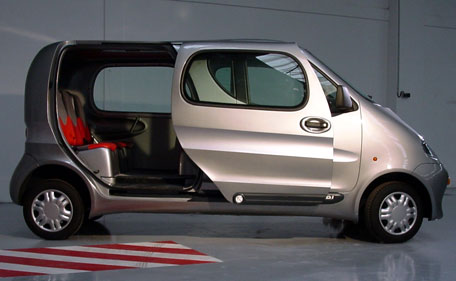Random highlights on alternative energy taken from recent Internet postings:
From Zimbio.com, a reminder that Thomas Edison is credited with not only inventing the light bulb, but he also designed an electric car battery (http://www.zimbio.com/Electronics/articles/Pu-dbQkqAzU/New+Lithium+ion+Batteries+Worked+Nissan+NEC). Edison released the first nickel iron battery in the 1900s as a cheaper alternative to lead acid batteries “with better reliability and longer life,” and was first used in electric cars around 1920, according to Zimbio. Today, the Nissan Motor Company and the NEC Corporation are working together on developing a lithium ion battery for hybrid and all-electric vehicles that will be a “breakthrough technology to make the auto industry even greener.” Their chief competition may be two other Japanese companies: Toyota and Matsushita Electric Industrial Co.
Pennington, NJ-based Ocean Power Technologies (Nasdaq: OPTT, http
://www.oceanpowertechnologies.com/) a pioneer in wave-energy technology that harnesses ocean wave resources to generate electricity, announced July 13 that they will team up with Lockheed Martin (NYSE: LMT) to develop a 19-megawatt wave energy project in Australia. Dubbed as one of the largest wave-energy projects ever, it is based on a grant from the Commonwealth of Australia. Both companies apparently see a future for wave energy, which according to the World Energy Council has the potential to produce about 2,000 terawatt hours of electricity a year or enough to meet 10 percent of the world’s current energy needs. OPTT stock got a big boost from the announcement, up to nearly $4 but then fell back. At close of market July 17 it was trading at $2.63, down 4 cents on the day. Its 52-week trading range is $2-$5.60 and market cap is $27 million.
Squeezetrigger.com, a website service dedicated to “help bonafide shareholders of publicly-traded US companies fight short selling,” filed a post July 17 suggesting six stocks are “ripe to go up in the next five weeks.” (http://delayedquotes.cboe.com/news/news_story.html?idnews=238966436&ASSET_CLASS=&ID_OSI=&ID_NOTATION=) The prediction is based on the stocks “high probability” to go up based on “seasonal tendencies.” Squeezetrigger has built a database that allows it to analyze more than 20 years of data to predict seasonal bias. One of those stocks is a smallcap, Milton, GA-based Exide Technologies (Nasdaq: XIDE, http://www.exide.com), a leading lead acid battery manufacturer. At close of market July 17, XIDE was trading for $3.37, up 5 cents for the day. XIDE stock has a 52-week trading range of $2.22-$7.89 and a market cap of $263 million.
The Coalition of American Solar Manufacturing announced that imports of Chinese solar cells and panels decreased in May, the second straight month there has been a decrease compared to the same month in 2011. The U.S. Department o Commerce report showed that Chinese solar imports totaled $124.1 million in May, down 45 percent from $225.8 million in May 2011. The reason? The coalition suggests the totals reflect “the market’s rising recognition of the costs, risks and uncertainties associated with importing Chinese solar cells and panels.” For the full year 2012 through May, however, Chinese imports are still ahead of 2011: $1.21 billion in 2012 compared to $993.2 million in 2012.
Finally, look for Tata Motors “Mini CAT,” also known as the “Air Car” to debut in August (http://www.caradvice.com.au/141944/tata-motors-mini-cat-air-car-to-debut-in-2012/). Correct, it’s a car with an engine that runs on compressed air. The Mini CAT has a tubular chassis, a fiberglass body glued, not welded, with a microprocessor controlling all its electrical functions. One small radio transmitter works the lights, turn signals and other electrical devices, which are few. Cost of the car is expected to be about $8,200 U.S. Also, the car has an access card instead of keys and is expected to cost about $1.12 per 100 kilometer to operate. Top speed is about 60 mph and its range is about 185 miles between stops at special air compressors for refueling.
